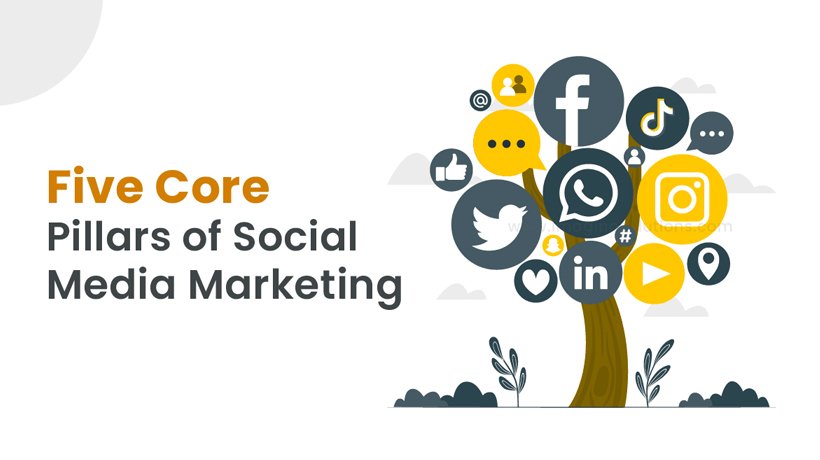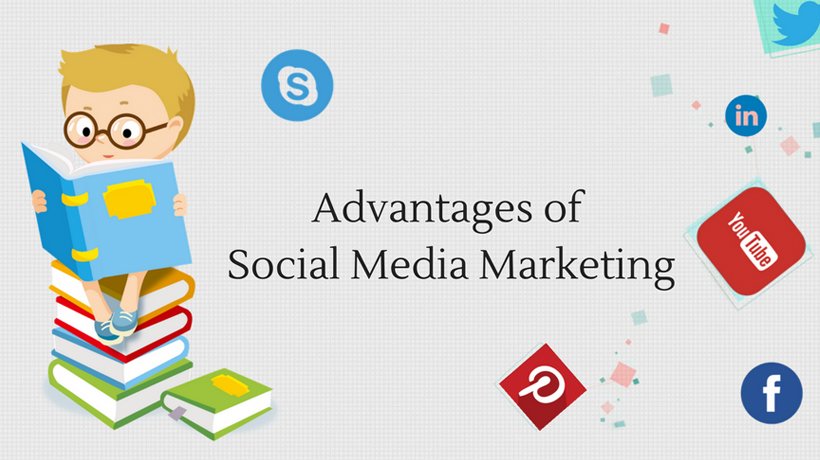How to distribute their messaging is a crucial consideration for marketers when creating marketing programmes. Through both free and paid methods, social media aids in getting those messages to the appropriate individuals at the right time. Additionally, marketers can use social media to discover more about the demographic, geographic, and personal characteristics of their audience. Because of this, businesses can tailor their messaging and content to increase engagement.
A good social media marketing programme will be built on five pillars.
- Social strategy:
With any marketing campaign or activity, an appropriate strategy should be laid out in advance. Organizations need to determine the goals of the program, the channels that will be used and what types of content will be shared. Here are some examples: Determine goals. Using social media for marketing should align closely with business and other marketing program goals.
Some goals that businesses can use to measure success include increasing brand awareness, driving website traffic and leads, and increasing revenue. Select social media platforms. There are many social platforms available, but it doesn’t make sense for businesses to use them all. Organizations need to know their audience and choose the platform(s) that best fit their demographic. - Planning and publishing
It’s time to start publishing once a plan has been established. A fresh blog post, information about a future event, or a new product video might all be used to achieve this. But maintaining consistency is essential for a successful SMM programme. Organisations should update their page frequently in order to grow their audience. The audience will continue to visit your site if you continuously post pertinent information.
Social media posts from businesses should complement other marketing campaigns. Marketers may plan their posts to go live at the right time using tools like Hootsuite, HubSpot, and Sprout Social.
- Listening and engagement
Businesses who use social media to engage customers can experience an increase in talks about their products and brand. Users will leave comments on and share content, mention the brand in their own postings, and even start chatting via the instant messaging features. Because there are notifications in place to inform social media managers, these interactions are excellent. This makes it possible for them to provide excellent customer service, which enhances the client experience.
On social media, users can talk about a corporation, its name, products, or services without mentioning them specifically or addressing them by name. Brandwatch, NetBase Quid, and Sprinklr are just a few of the social media listening tools available to stay informed of the conversation. Free resources like Google Alerts
- Analytics and reporting
As more content is published and the audience expands, it is a good idea to continuously measure performance. Questions to ask include the following:
Which posts are getting the most engagement?
Where are a brand’s followers from?
The success of any marketing program is dependent on its data and analytics outputs. A marketing team can use this information to make more informed decisions on future campaigns and take advantage of what works.
Each social platform has its own analytics data, but there are other tools that can collect data from many channels into one location. This enables marketers to evaluate the overall success and failures of their marketing campaigns.
- Advertising
Much of social media marketing is free — with the exception of resource time and specialized tools. Building an audience and publishing content on free social media sites is a great way to achieve marketing goals, but as the program grows, so does the budget.
Paid marketing features can be very valuable to organizations. They can target their advertisements at audiences based on many factors, including demographic information, retargeting and behaviors.
There are tools to help manage social media marketing at volume, but using the native ads functionality to begin is enough to promote posts, capture leads and ensure messages get in front of the right audience.



